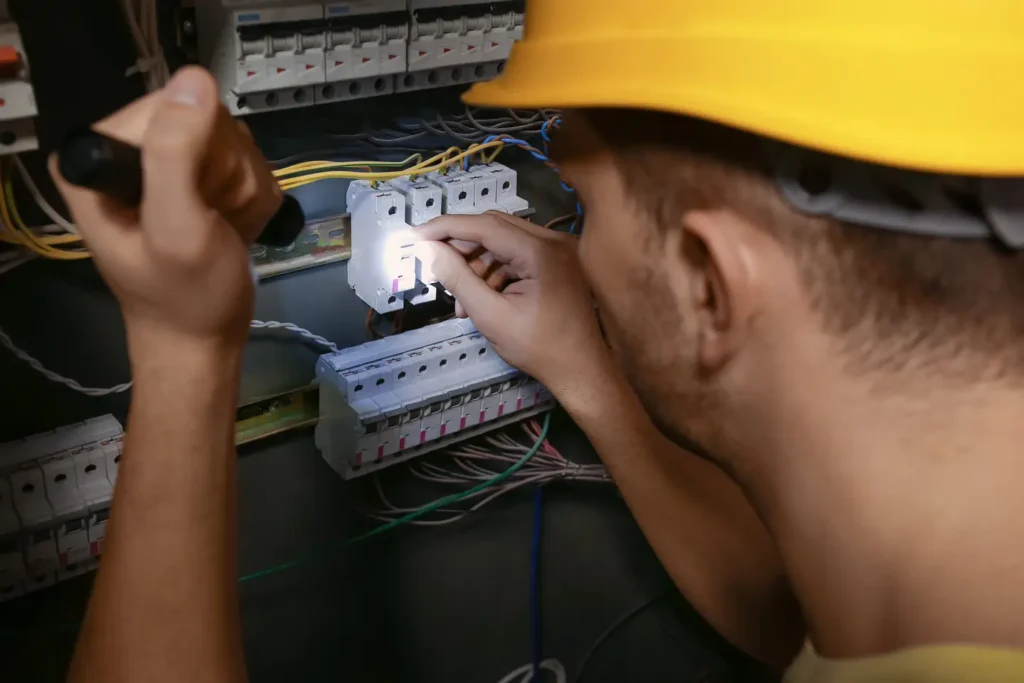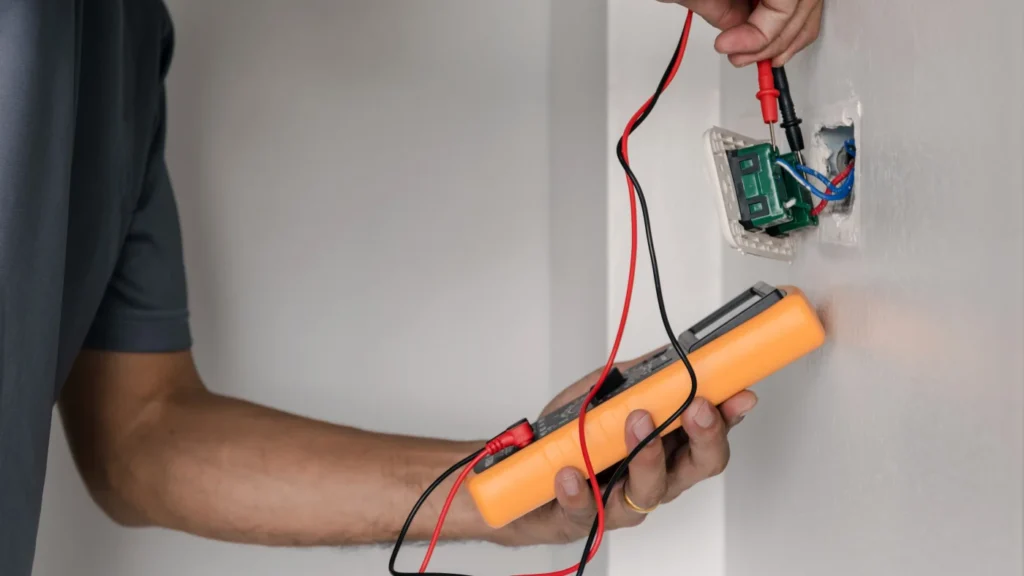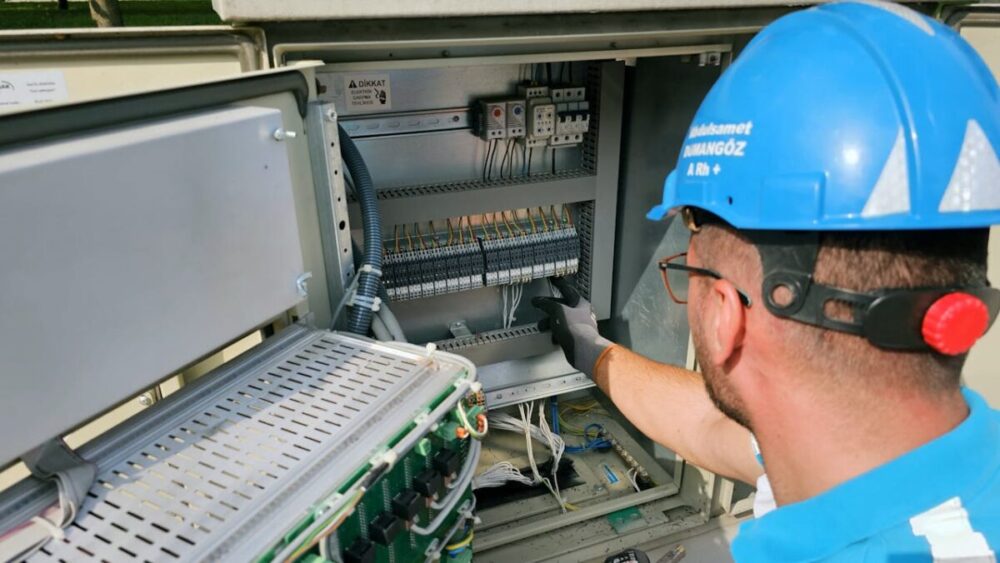Electrical maintenance is a vital part of keeping people, families, homes, businesses, and other industrial settings safe and secure. When you monitor the state of your electrical system with regular maintenance, you’re keeping those around you safe while making sure everything is working properly.
However, electrical maintenance is not just one type; there are, in fact, five different types out there. Today, we’re going to explore them all. So, what are the five common types of electrical maintenance? Let’s find out!
1. Preventive Maintenance
This is the most common type, preventive maintenance means you’re carrying out regularly scheduled inspections to identify and prevent any potential issues before they become serious and detrimental problems. Prevent maintenance includes testing circuit breakers, examining wiring for wear and tear, and ensuring proper grounding of electrical systems.
Preventive maintenance increases the lifespan of electrical equipment, reduces unexpected failures, and complies with safety standards. It’s usually used in residential, commercial, and industrial setups and is an essential strategy for reducing downtime and making sure your critical electrical systems are working efficiently and uninterruptedly.
2. Predictive Maintenance
This type of maintenance uses advanced technology to monitor the condition of electrical systems and predict any failures. Tools like infrared thermography, smart sensors, and vibration analysis gather real-time data to monitor how the equipment is working. This allows for maintenance to be scheduled specifically when necessary, avoiding any unexpected breakdowns and unnecessary repairs.
Predictive maintenance is also cost-effective for large-scale operations and industrial facilities, as it reduces downtime and improves efficiency. This type of maintenance makes sure electrical systems are reliable and working efficiently by detecting issues in advance.

Source: artisanelectric.net
3. Corrective Maintenance
Corrective maintenance is the type that focuses on fixing faults and malfunctions after they occur. This is important for restoring the functionality of electrical systems and equipment, replacing damaged wires, repairing tripped circuit breakers, and fixing faulty outlets or lighting.
Corrective maintenance can be completed quickly to minimize disruptions, but note that they can be reactive at times. It’s a realistic solution for immediate problems, especially in situations where preventive measures were not enough or the issue arose surprisingly, for safety and continued operation and reliability.
It is often the last resort, because whatever problems were anticipated have occurred, and now they’re being fixed. We outline how to choose the right type with Seasonal Electrical Maintenance Tips late in this guide.
4. Condition-Based Maintenance
Condition-based maintenance is where electrical systems are monitored in real-time to find out their actual condition and plan maintenance accordingly. This uses technologies like insulation resistance testers, temperature sensors, and software to monitor performance to detect wear and tear or any signs of degradation.
Condition-based maintenance minimizes unnecessary interventions and reduces costs by fixing equipment only when necessary. It’s especially beneficial for high-value or critical electrical components, making sure they remain efficient and reliable. This also extends equipment life and improves operational efficiency by fixing issues before any significant damage occurs.
5. Emergency Maintenance
Emergency maintenance is carried out during urgent or unforeseen situations that need immediate attention, such as power outages, electrical fires, or sudden equipment failures. This approach reinstates functionality quickly to reduce downtime and prevent any further damage.
Electricians may replace damaged components, repair circuits, restore connections or address safety hazards on the spot. While they can be expensive due to its unplanned nature, emergency maintenance is crucial for protecting property and maintaining safety.
It’s commonly needed in residential, commercial, and industrial settings during crises or natural disasters, for a swift return to normal operations.

Source: shafniskyelectric.com
How To Choose The Right Maintenance Type?
Now that we’ve given you all the five common types of electrical maintenance, we’re going to tell you how to choose the right type of maintenance for your needs.
Assess System Complexity
For houses or small businesses, preventive maintenance is best for fixing potential issues before they get worse.
Large facilities or industrial plants with intricate and complex setups will benefit from predictive or condition-based maintenance to monitor performance continuously and improve efficiency.
Operational Needs
If downtime is not an option, such as in hospitals, factories, or industry plants, predictive and condition-based maintenance are great fits for preemptively fixing problems.
For settings with less critical systems, corrective maintenance is best to fix any issues as they arise.
Budget
Preventive and predictive maintenance usually need payment upfront but save money in the long term by avoiding expensive repairs.
Emergency maintenance is usually more expensive due to the urgency and unplanned nature of repairs but may be unavoidable in real-crisis situations.
Safety and Compliance
Local building codes or industry regulations may require specific maintenance practices, like regular preventive checks or condition-based monitoring for high-risk equipment or parts.
You must ensure compliance, as it is crucial to avoid penalties and maintain operational safety.
Expert Consultation
Licensed electricians or maintenance professionals will evaluate your system and recommend the best type. They consider and monitor the equipment’s condition, usage patterns, and any potential vulnerabilities to create an individual and customized maintenance plan.
Make sure you’re looking at proper certifications and customer reviews when you’re looking for an electrician. An experienced professional will know right away what your system will need.

Source: shafniskyelectric.com
Consider System Age and Usage
It’s important to consider how old the electrical system is and how much it is used to assign the right type of electrical maintenance.
- For older systems ─ Condition-based or corrective maintenance might be needed more frequently for older systems to address wear and tear.
- Newer systems ─ Preventive or predictive maintenance makes sure newer systems remain efficient and extend their lifespan.
Seasonal Maintenance Tips
Check out these maintenance tips for different seasons below.
- Spring ─ Look at outlets outdoors and lighting for winter damage, and test your smoke and carbon monoxide detectors.
- Summer ─ Fix air conditioning units, check circuit breakers for overheating, and inspect the outdoor extension cords.
- Autumn ─ Test out heating systems, inspect electrical panels, and replace outdoor light bulbs for shorter days.
- Winter ─ Check your holiday lights for safety so outlets can handle heaters, and inspect backup power systems for natural disasters.
Conclusion
And there you have it! We hope you enjoyed our take on the five most common types of electrical maintenance. These types, preventive, predictive, corrective, condition-based, and emergency, can help maintain safe and efficient systems.
Whether you want maintenance for your home or a commercial facility, staying on top of your electrical system ensures reliability, reduces risks, and potential dangers, and saves costs.











